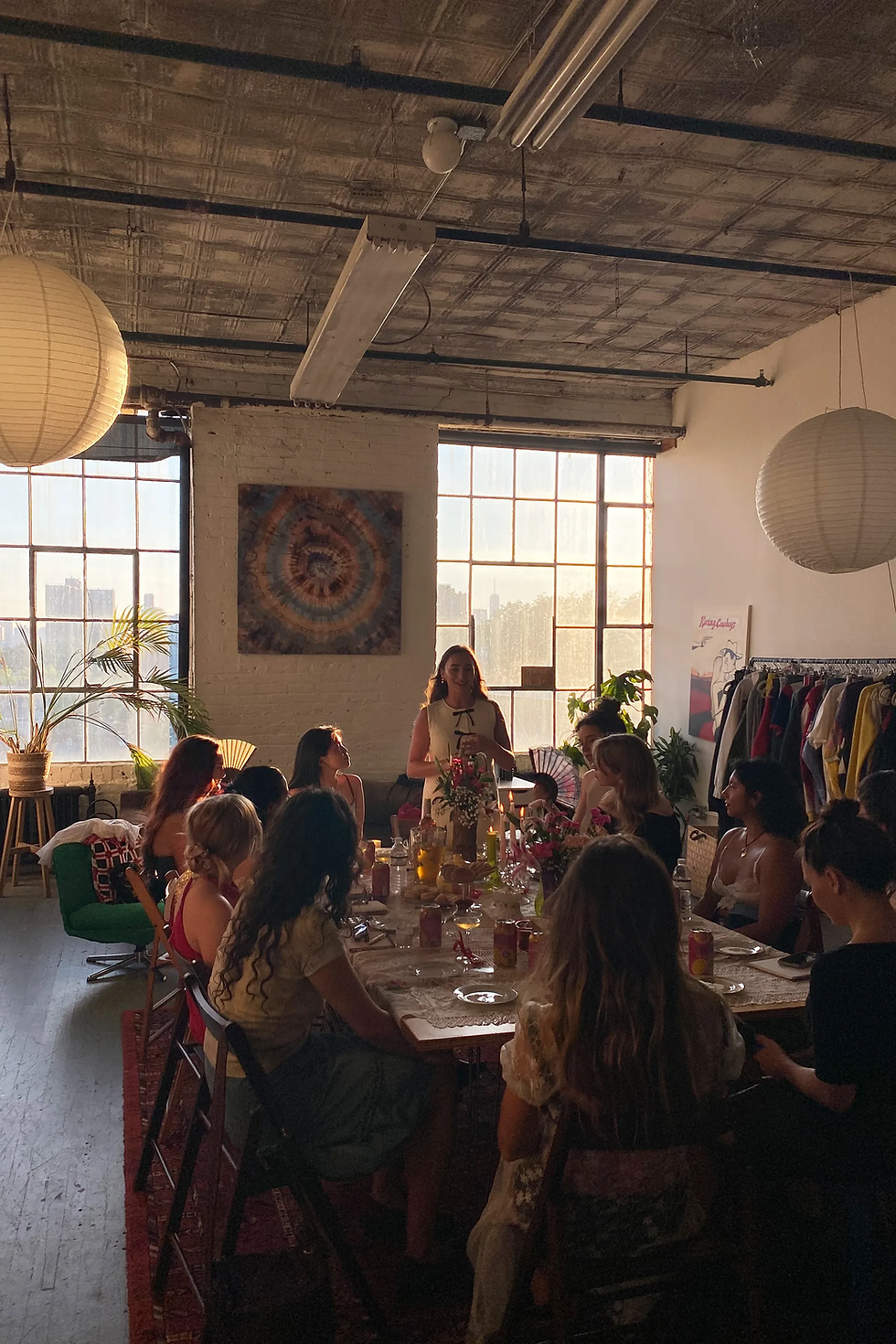Insight of the Day: Why fashion brands are popping up in ‘third places’
- InsightTrendsWorld
- Aug 31, 2024
- 2 min read
Findings
Indie fashion brands are increasingly hosting pop-ups and events in "third places" like artist studios, gyms, coffee shops, bars, and restaurants. These spaces serve as communal gathering spots that offer a more intimate and personal shopping experience, allowing brands to connect with consumers without the need for a traditional storefront. This trend is driven by the desire for offline connections and community building, offering an alternative to the online-dominated retail landscape.
Key Takeaway
Third places are becoming crucial venues for indie fashion brands looking to create meaningful connections with their customers. These spaces allow brands to engage with consumers in a more personal and community-driven environment, enhancing brand loyalty and fostering a sense of belonging.
Trend
The main trend is the shift towards hosting fashion events and pop-ups in non-traditional, communal spaces ("third places"), which are emerging as important venues for both social interaction and retail experiences.
Consumer Motivation
Consumers are motivated by a desire for unique, offline experiences that go beyond typical shopping. They seek community, connection, and the opportunity to engage with brands in a more meaningful and personal way.
What is Driving the Trend
The trend is driven by a combination of factors: the decline of traditional retail spaces, the rise of hobbyism, the need for physical community spaces post-COVID, and a growing fatigue with the online-only shopping experience.
Who are the People Referred to in the Article
Indie Fashion Brand Founders: Entrepreneurs who are leveraging third places to create physical touchpoints with their customers.
Consumers: Primarily those who are seeking offline, community-driven experiences and who value personal connections with the brands they support.
Industry Experts: Individuals like Louise Yems, who provide insights into the evolving role of third places in consumer culture.
Description of Consumers, Product, or Service
Consumers: Individuals who are tired of the online shopping experience and are looking for more personal, community-oriented ways to engage with fashion brands.
Products/Services: Indie fashion brands offering clothing, accessories, and related products, often through pop-up events and markets held in non-traditional spaces.
Age
The article suggests that the trend appeals to a broad age range, particularly younger consumers (Millennials and Gen Z) who are more likely to seek out unique and community-driven experiences.
Conclusions
The re-emergence of third places as key venues for retail and community interaction reflects a broader shift in consumer behavior. Indie brands that utilize these spaces effectively can build deeper connections with their customers, fostering loyalty and creating a unique shopping experience that goes beyond the transactional.
Implications for Brands
Brands should consider leveraging third places to create more engaging and personal retail experiences. This approach can differentiate them in a crowded market, especially for indie brands that may not have the resources to open traditional storefronts.
Implication for Society
The return of third places as important social and retail spaces underscores the importance of community and physical connection in a digital age. These spaces offer a reprieve from the isolation of online interactions and help foster a sense of belonging and shared experience.
Big Trend Implied
The big trend implied is the growing importance of offline, community-centered retail experiences as a counterbalance to the dominance of online shopping. This reflects a broader desire among consumers for meaningful, personal connections in their shopping experiences.
Source: https://www.voguebusiness.com/story/consumers/why-fashion-brands-are-popping-up-in-third-places

Comments